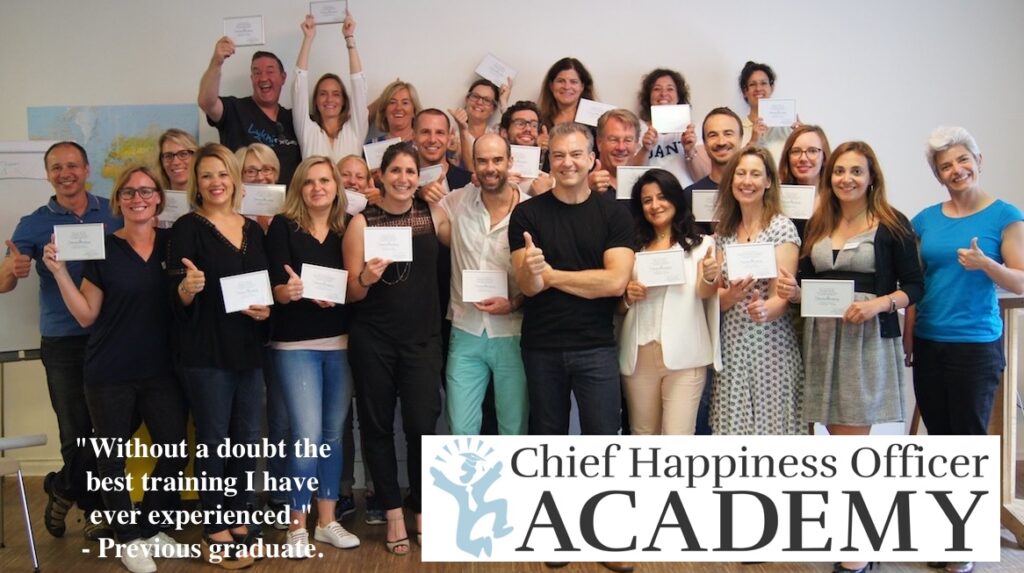
The way most companies recruit new people is in need of some serious improvement.
Taking or not taking a job is a big decision, and yet you as an applicant are supposed to decide based on just one or two job interviews. The result is that when you show up for your first day at a new job you have little idea what the job, the manager or the co-workers are really like. You may be in for some surprises.
Also, it’s difficult for a manager to know if she’s hiring the right person, when all she has to go on is a CV, a personality test and one or two job interviews with that person. How can she know what this person is really like? Some people interview very poorly but are great to work with. Others seem charming, elouquent and competent in interviews, and then turn out to be… not so great to work with.
There’s gotta be a better way.
This is why I was very happy to hear that the good people at Menlo Innovations in Ann Arbor, Michigan have found a way to hire people that is both faster and better than the traditional way.
They call it Extreme Interviewing (a term they’ve trademarked, btw). It’s the coolest, most innovative way I have heard of to hire new people and the results are amazing! Read on to see how they do it.
How to do Extreme Interviewing
There are three basic principles in Extreme Interviewing.
Drop the regular job interviews
The first principle of Extreme Interviewing is to drop the idea of regular job interviews, and to instead recreate the actual work environment in the company as faithfully as possible for the candidates. This way, interviewers see the candidates in real working conditions and candidates get a feel for what working there is really like.
Involve the existing team
The second principle is to involve the existing team in recruting, rather than leaving it to HR and the manager. Existing team members are in a great position to evaulate the qualities of new co-workers – after all, they’ll be working with the ones that get hired. And they’ll be picking up the slack, if the new hires are not up to snuff.
Personality matters
And the final principle, is to focus equally on personal skills and technical skills. A candidate may be a genius in his field, but to Menlo it matters more that she can communicate and teamwork well.
Goals for recruting
These are their goals when recruting:
- Don’t just increase headcount, increase the team’s output – All too often, adding people to a project has a negative effect on productivity as the new people adapt. Productivity only increases much later.
- Get new hires up to speed quickly – Help them throught the learning curve on Menlo’s products, technology and eXtreme Programming.
- Interview up to 50 applicants in one week – Yes, you read that right.
- Continue work while interviewing – Continue the work on existing projects while hiring.
Now that’s ambitious.
Also, Menlo Innovations base their development work on the IT project model called eXtreme Programming (or XP) which is radically different from more traditional development methods and want to use the same principles when recruiting. Here’s a previous post about XP and how it can be used in non-software projects.
How to do Extreme Interviewing
Here’s how Menlo did it once, when they needed to hire 12 new developers all those new developers.
1: Find candidates
HR worked with a consultant for two months to find suitable candidates. They did not focus on technical skills but on finding candidates with energy, enthusiasm, curiosity and an ability to communicate clearly. 50 people were invited to apply, and all suitable applicants had their first interview scheduled for the same time.
2: Involve the existing team in the process
On the day before the first interview, twelve volunteers from the existing team were assembled to learn the interviewing process. The volunteers worked through the exercises that the candidates would be asked to perform so that they would be familiar with them
They also reviewed the goal of the first interview: To identify candidates with good teamwork, communication and interpersonal skills.
3: First interview – make your partner look good
On the day of the first interview (a saturday) all the candidates appeared together. They were assembled, fed and given a short introduction to eXtreme Programming and to the company. They were told that they were not being evaluated on their programming talents in this round but only on their ability to think critically, ask good questions and finally on their ability to make their partner look good.
They were then set to work on tasks that were very similar to normal work at Menlo, under the supervision of existing Menlo employees. Because all work in XP projects is done by two people working in pairs, the candidates were of course also working together in pairs.
This exercise quickly revealed who was willing to help others and who just wanted to look good themselves. It also showed who was good at drawing on the knowledge of their partner to make even better decisions.
During this twenty minute exercise the room was noisy and energetic, very much like Menlo’s normal working environment. At the end of the twenty-minute period candidates were brought back to a central seating area for instruction on the second exercise, while interviewers made quick notes about the interactions they had observed.
After three exercises the interviewers sorted candidates into three groups: Poor teamwork skills, adequate teamwork skills and strong teamwork skills. The fifteen with the strongest teamwork skills were invited back for a second interview.
4: Second interview – work on actual tasks at Menlo
Second interviews were scheduled during normal working hours during the week that followed the first interviews. In this round, each applicant worked with an existing Menlo employee on actual tasks, allowing the interview team to assess the candidate without simply quizzing him or her.
This gave the interviewers a great way to both assess a candidate’s technical skills and to get a sense for how that person would fit in at Menlo. The candidates also got another direct taste of what working at Menlo is like.
5: Making the decision
Now it was time to decide on who to offer a job, and the team did this based on the question “which of the candidates do you believe would make good pair-programming partners???? They quickly arrived at a ranking and the VP decided to make offers to the top eight candidates. Seven of the eight candidates accepted positions.
Results
The results were stunning:
- The new employees fit in quickly – How quickly? Well, when Menlo repeated the process a month later with a new interview team consisting of veteran employees and some new hires, the candicates could not tell the new employees from the old timers. Also, after just six weeks, a new hire was skilled enough in the practices to mentor a new employee just joining the team.
- Low employee turnover – There was only one developer lost to attrition during the life of the team.
- Reusing the process – Menlo hired fourteen developers within two months using this process and six more later using a smaller variant of the process. It is also used in non-IT departments of Menlo Innovations.
- Making life easier – Managers at Menlo called it “a joy to manage and work with such a team”.
I stand in awe of this method for many reasons, particularly that:
- It’s radical – It’s an almost total departure from the traditional hiring process. And of course we all know how well that works :o)
- It’s consistent and congruent – The whole hiring process is just an extension of the way they already work at Menlo, making it easier for the company to evaluate applicants and for applicants to know if they will fit in.
- It’s inclusive – Existing employees who want to particpate get to help select their new co-workers.
- It emphasizes people skills – Because team working skills and personality are as important as technical skills.
- It’s efficient – You get a huge number of interviews done with relatively few ressources.
- It works – And it works much better than the traditional way.
Richard Sheridan, the founder of Menlo pioneered this approach in his previous job as a VP at Interface Systems. Back then, a team member asked him about the success of this process, saying “Rich, you couldn’t have know it was going to be such a success when you started this change process. Why were you willing to take such a risk?” Rich’s answer was simple: “When you realize that the risk of changing is far less than the risk of staying the same, dramatic change is actually easy.”
And most importantly, for my money, employees love working for Menlo. A typical phrase is “it’s fun being us!”.
Parallels in other companies
The method reminds me of two similar practices by higly successful companies:
Southwest Airlines and their motto “Hire for attitude train for skill” is a lot like Menlo’s focus on communication and cooperation skills first and technical skills second. This makes excellent sense considering the need for effective teamwork experienced by all companies today.
Semco (a Sao Paulo-based company with 3.000 employees) also do group interviews. They get all the applicants together at the same time and they are then interviewed by a group of Semco employees who choose who to hire. They even let employees choose their own bosses in this way.
This shows that what we have here is an approach to hiring that is better, more efficient and cheaper than the regular way. Maaaaybe it would be worth trying it out at your company?
A great big thank you to Michael Andersen, a former employee of Menlo, for telling me about them.
UPDATE: Michael weighs in with his latest Menlo experiences. He seems to like it :o)
If you liked this post I’m pretty sure you’ll also enjoy these:



Leave a Reply